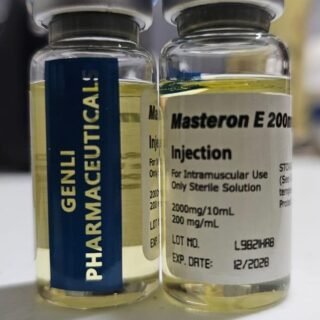Category
- Best Peptides for muscle growth
- Geno Pharma Domestic Warehouse 2 (Canada&USA)
- GP(Domestic Shipping US) Warehouse 1
- Human Pharma Premium
- Phar Labs Premium-Select
- Steroids on Sale USA, Real Steroids Online
- New arrivals in USA
- Most popular steroids in USA
- Antiestrogens / Gonadotropins
- Bangkok Steroid USA
- Biopharma Steroid USA
- British Dragon
- Anabolic Steroids for Horses
- Fat-burners
- Gen Pharma USA
- Medical Pharma Steroid USA
- Medical Tech Steroid USA
- Novocrine Steroids
- HGH USA
- Omega Labs Steroid USA
- Rotterdam Steroids USA
- SARMs USA
- Sciroxx
- Sydgroup Steroid USA
- Big vetenary Steroid USA
- Watson Steroids
- XT Labs Steroids
Most Popular steroids USA
-
 Saizen 8.8 mg (Somatropin) 26.4 UI Domestic USA
Saizen 8.8 mg (Somatropin) 26.4 UI Domestic USA
$115.00Original price was: $115.00.$98.00Current price is: $98.00. -
 PARAMIX 300 Genli Pharma – Trenbolone A, E & Hexa Mix 10 ml
PARAMIX 300 Genli Pharma – Trenbolone A, E & Hexa Mix 10 ml
$110.00Original price was: $110.00.$99.00Current price is: $99.00. -
 Testosterone 400 Biopharma 10 Ampoules
Testosterone 400 Biopharma 10 Ampoules
$99.00Original price was: $99.00.$75.00Current price is: $75.00. -
 Testosterone Cypionate 200 Biopharma 10 amp
Testosterone Cypionate 200 Biopharma 10 amp
$99.00Original price was: $99.00.$72.00Current price is: $72.00. -
 Drostanolone Enanthate 200mg 10 ml - Masteron Enanthate
Drostanolone Enanthate 200mg 10 ml - Masteron Enanthate
$110.00Original price was: $110.00.$90.00Current price is: $90.00. -
 Primobolan Pills 25mg 100 pills Domestic USA
Primobolan Pills 25mg 100 pills Domestic USA
$99.00Original price was: $99.00.$85.00Current price is: $85.00. -
 Clenbuterol for Sale 40mcg 100 Tabs - GP Premium Domestic USA
Clenbuterol for Sale 40mcg 100 Tabs - GP Premium Domestic USA
$99.00Original price was: $99.00.$65.00Current price is: $65.00.


Table of Contents
ToggleWhat is Hypertrophy?
Hypertrophy is understood as any process of increase in the cross-sectional area of muscle fibers as a consequence of protein synthesis.
In general, the word gym hypertrophy refers to muscle growth that occurs when protein synthesis exceeds breakdown, which appears to be mediated by satellite cells and occurs as a result of strength exercises performed in the gym continuous way.
How is hypertrophy generated?
There are 3 factors that intervene to generate muscle hypertrophy induced by the exercises we do in the gym: mechanical tension, muscle damage and metabolic stress. Depending on the type of exercise performed, these 3 factors can occur together, generating a synergistic effect on muscle development.
Mechanical tension is possibly the most relevant factor for muscle hypertrophy, since it alters skeletal muscle through mechanical and chemical responses in muscle fibers and satellite cells.
The degree of mechanical tension generated by the exercises carried out in the gym will depend on the intensity of the load used, and the time in which the muscles are under tension, or what is the same, the duration of the load. The combination of these variables will increase the recruitment of muscle fibers, causing fatigue of the motor units, and thanks to this a great hypertrophic response is achieved.
Naturally muscle damage is directly responsible for any growth in muscle mass. The damage to muscle fibers produced by training activates an inflammatory response that generates the production of myokines, which in turn enhance the release of various muscle mass growth factors that stimulate satellite cell proliferation and differentiation.
This mechanical growth factor, generated by the stimulation produced by exercises, is a variant of type 1 insulin-like growth factor that is produced in muscle fibers, and which is especially sensitive to muscle damage generated by exercises that contain exercise routines training, which in turn generates an activation of satellite cells, as can be well observed in muscular traumas.
All the studies carried out indicate that it is this metabolic stress induced by the exercises carried out in the gym, which is responsible for the hypertrophic stimulus.
Metabolic stress is generally stimulated by resistance exercise and the anaerobic glycolysis generated from it to produce ATP, which leads to an accumulation of metabolites, such as lactate, hydrogen ions, and inorganic phosphate.
There is abundant evidence that this accumulation induces changes in muscle anabolism, which are possibly modulated by the combination of different hormonal factors, cell hydration, and the production of free radicals.
It has also been found that a lower pH associated with glycolysis increases hypertrophy, stimulates the activity of the sympathetic nervous system, and the breakdown of muscle fibers during training.
The best techniques to hypertrophy muscles
As we have specified before, when muscles are subjected to an overload, changes are produced in the myo-fibrils and in the extra-cellular matrix. This overload conditions the musculature that increases the size of the contractile proteins, we are talking about actin and myosin, and also the number of sarcomeres in parallel.
This means that an increase in the diameter of individual fibers will inevitably occur, leading to corresponding increases within the cross-sectional area of the muscle by the following techniques:
Superset training
The superseries consist of linking 2 exercises in a row without any rest between them. It is a traditional technique in bodybuilding, which is still used more by tradition than by scientific evidence, since there are no studies that corroborate supersets as a more efficient technique to achieve greater hypertrophy.
The assumption is made that in the absence of rest between sets, possibly motor unit fatigue and metabolic stress will increase, leading to increased muscle hypertrophy, but there is no evidence to support this assumption.
The most frequent is to combine the exercises in an agonist – antagonist way. In this sense, there are quite a few studies that have shown that the contraction of an antagonist muscle increases the force of subsequent contraction of the agonist muscle.
This is due to the inhibition reflex – an increase in elastic energy that accumulates in the muscle-tendon group. The greater the mechanical tension generated by the agonist muscle, the more muscle hypertrophy is favored.
It is also understood that to get the best benefits from supersets, explosive concentric repetitions should be performed during the second exercise, but there is no evidence on this point either. Robbins’ clinical trials were able to corroborate something that we all already knew, and that is that a routine with supersets has a greater number of repetitions, without this implying any significant reduction in the intensity of the routine, which is recognized as training density. , which tends to increase fatigue and metabolic stress, supposedly contributing to generating a greater hypertrophic stimulus.
Training with forced repetitions
Forced repetitions is understood as the ability to perform an extra number of repetitions, once the failure of support occurs in the concentric phase of the exercise, through a training partner who assists us. It is another tradition in bodybuilding, since everything seems to indicate that this forced increase in extra repetitions, which the training partner helps us to complete, increases the fatigue of the motor units and the metabolic stress, for which, in principle, it is generates a greater hypertrophic stimulus.
In this sense, the clinical trials by Ahtianen are very interesting, who investigated the relationship between forced repetitions and the secretion of growth hormone, after performing a superset consisting of a first exercise of 4 sets with 12 repetitions on the press, and a second exercise of 2 series of Bulgarian squats with 12 repetitions. For this, 2 groups were used, one of which performed 12 repetitions with 12 RM, while the other group performed the 12 repetitions with a heavier weight, so that they required assistance in the last repetitions. Analytical tests were performed 30 minutes after the end of the superset, and growth hormone levels were found to be significantly higher in the group that performed the forced repetitions.
drop set training
A descending series is understood to be when an extra series is performed, after the last conventional series in which muscular failure has occurred, but with a lower load, until reaching muscular failure again. As in the previous cases, it is a tradition in bodybuilding, and greater muscle hypertrophy is attributed to it by increasing the fatigue of the motor units.
By increasing the time in which the muscles are under tension, metabolic stress and ischemia are also increased, improving anabolism. Some bodybuilders perform several consecutive drop sets in order to increase fatigue and metabolic stress, but this is less common.
Goto clinical trials evaluated the performance of a 50% descending series of 1 RM, after several conventional series with high load. Analyzes showed a significant growth hormone peak when the descending series was performed, compared to when it was not performed, also observing that the descending series increased the muscle cross-sectional area. On the other hand, the descending series has the great advantage that it does not require a training partner, which allows greater independence.
Intramuscular tension
Intramuscular tension is understood as the effort exerted by a muscle to generate a force. Bodybuilders know that force is equal to mass times acceleration, so it is obvious that intramuscular tension is directly influenced by the magnitude of the load time’s acceleration that is transmitted to the resistance. Simply put, intramuscular tension can be increased by increasing either weight or acceleration, or both.
That is, the higher the intramuscular tension, the greater hypertrophy will develop, also taking into account that a high intramuscular tension increases the rate of protein degradation and the reception of amino acids by the muscles. It should be clearly understood that muscle tension is not the same as burning or the perception of muscle fatigue. Many bodybuilders believe that a slow twitch creates more tension in the muscles, just because they feel that tight or burning sensation, and that’s simply not true.
If in each concentric contraction (raising the load), the weight is lifted with more acceleration, a greater degree of intramuscular tension will be produced, and if in an eccentric contraction (lowering the load) the opposite occurs, that is, it decreases with less acceleration, more intramuscular tension will be produced.
Lifting a load faster requires more force, while lifting it slowly requires less force. During an eccentric contraction it takes more force to lower the load slowly than fast.
Frequent mistakes about hypertrophy in gyms
Train many days in the gym: Schoenfeld et al. in 2019 clarifies that when talking about the number of days of training, they are not referring to the days you go to the gym, but to the days you dedicate to a certain muscle group. Today we know that the number of days you go to the gym is not that relevant in terms of hypertrophy. An example of this would be 3 biceps series 2 days per week, they would have the same efficiency as 6 series performed 1 day per week, since the total number of series worked weekly on that muscle group are the same.
• The only way to hiertrophy is with dumbbells, bars and machines: This is not entirely true. Hypertrophy can be obtained with calisthenics and TRX training, in this sense there are numerous studies such as those carried out by Counts et al. in 2016. What is certain is that once a certain level of muscle mass is reached, generating Greater hypertrophy requires applying more intense muscle tension during the exercises, which necessarily implies adding loads if there weren’t any before, or increasing them, as indicated by Morton et al. in 2019.
• Super slow repetitions hypertrophy more: Some bodybuilders use a training method called «Super Slow Training«, which consists of performing each repetition of each exercise very slowly (about 15 seconds), to increase their muscle mass. This simply does not work, the clinical studies by Carlson et al. in 2019 have exhaustively corroborated that the time that a repetition lasts is totally irrelevant for the purposes of hypertrophy.
• More sets of exercises for a muscle group means more hypertrophy: This is also not true. There is the so-called “cap of improvement” beyond which continuing to train does not result in increased metabolic stress, but only more motor fatigue, both of which are necessary for hypertrophy.
• Resting a lot between sets causes greater hypertrophy: This is true in moderation. Clinical studies by Schoenfeld et al in 2016 have found that 3 minute rests between sets are more efficient than 1 minute for hypertrophy purposes, however rests longer than 3 minutes have not achieved better efficiency.
Share this page:
- Click to share on X (Opens in new window) X
- Click to share on Facebook (Opens in new window) Facebook
- Click to email a link to a friend (Opens in new window) Email
- Click to share on LinkedIn (Opens in new window) LinkedIn
- Click to share on Reddit (Opens in new window) Reddit
- Click to share on Pinterest (Opens in new window) Pinterest
- Click to share on Telegram (Opens in new window) Telegram
- Click to share on WhatsApp (Opens in new window) WhatsApp
- Click to share on Tumblr (Opens in new window) Tumblr
Written by Steroids USA
Pay with WISE APP or Remitly
Pay with WISE App or Remitly
Fast money transfers from USA for fast delivery of steroids
Secure delivery in USA
100% reliable shipping in USA
24x7 Support
Online 24 hours
Low cost delivery
Great shipping prices in USA
BULK ORDER DISCOUNT
If you are a reseller in the USA you can get a special DISCOUNT, we can give you up to 50% or more on bulk orders. If you want to make a bulk order, we can negociate for orders of over USD$4,000, contact us by email.
Steroids info










